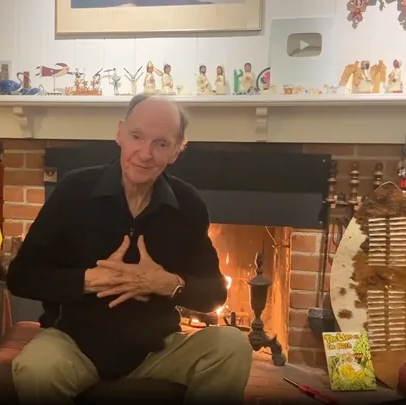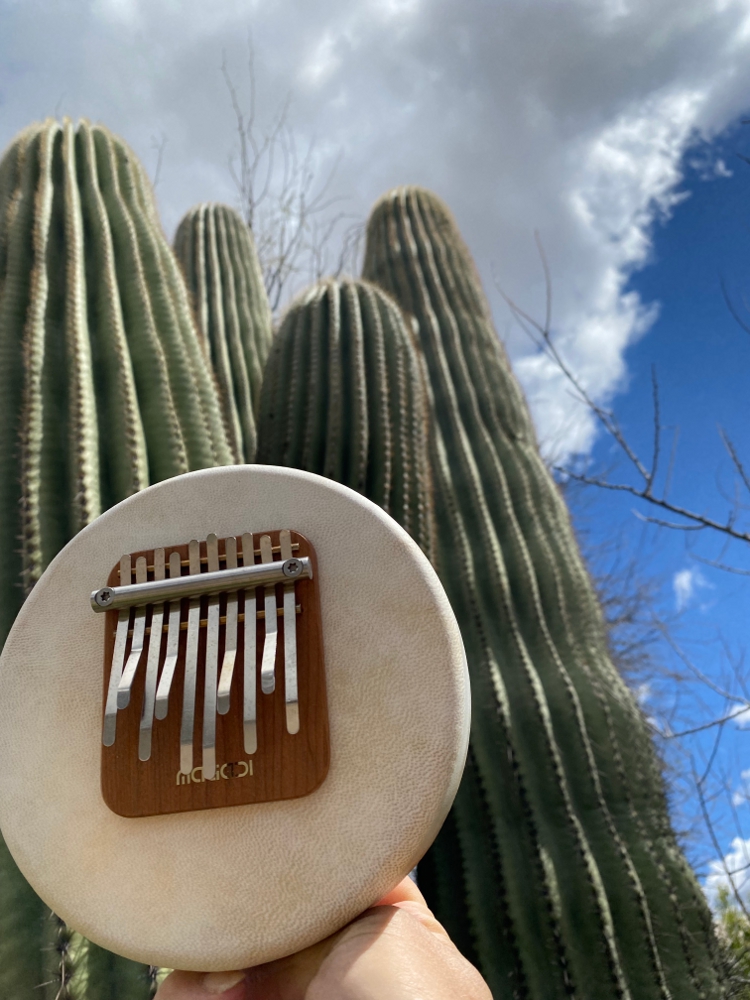
Use of this website constitutes acceptance of the Privacy Policy and User Agreement. Copyright © 2020 Kalimba Magic. All Rights Reserved.
How well do you know your kalimba? Could you create one? Ever feel the yearning to make your own?
Bart Hopkin, the guru of creative musical instrument sound, design and construction, has written and published a book dedicated to building kalimbas, both traditional and inventive.
For those not in the know, the term “lamellaphone” refers to any instrument that makes sounds by the vibrating of lamellae (plural of lamella) or plates, and includes kalimbas, mbiras and modern variants – in other words, any instrument that goes “boing” when something thin is struck or plucked.
Hopkin has written 10 other books on building instruments, as well as dozens of articles in Experimental Musical Instruments, the journal he published for 15 years. For more than 4 decades he has composed, arranged and performed guitar as well as music for the wild assortment of instruments that he has designed and built.
In Making Lamellaphones, expect to learn the basics of kalimba and mbira design… the hows and whys of the kalimba and its sound… about mbiras and the people who make them… and get ready to have your mind blown (and a fire lit under you) by the most creative lamellaphones that you will ever experience.
Intuitively and logically, this book should be the companion to everything else connected with kalimbas in your life. Anyone who loves the sound they make, their feel, their design, or the actual playing of an instrument in this family really should have already read and digested Making Lamellaphones. If you feel a calling to create any of a wide variety of fascinating instruments that make the kalimba magic come alive (or to invent your own, which the author actively suggests), then you have found a wonderful introductory manual. But whether you want to actually make one or not, this book adds much to “grokking” the soul of the kalimba/lamellaphone experience.
This book, by Bart Hopkin and Richard Selman provides a nicely balanced marriage of down-to-earth explanation and theoretical scientific understanding. It explains the design and construction of both traditional and very innovative instruments – including instructions, illustrations, audio samples, discerning commentary and some spectacular scientific discussions.
Bart Hopkin has an engineer’s mind, an artist’s eye, expert musical abilities, probably a goofy sense of humor, which is most likely a prerequisite for an experimental musical instrument wizard, and it seems, boundless curiosity. Plus (luckily for the rest of us) the drive to share and educate the world about his fascinating inventions and how we can make our own. See his website, barthopkin.com, for much more, including his fantastic Instrumentarium where you can read about and listen to a multitude of cool, beautiful, sometimes crazy, sometimes weird musical inventions.
Making Lamellaphones begins with an engaging brief discussion about lamellaphones and their African origin, and then reader is shown exactly how to put together, almost for free, a very basic, simple kalimba, called “Illustrative K.” A really good strategy! By having the reader begin by making something, Mr. Hopkin gives the gift of starting out with an adventure, producing an instrument right away, to hold, to hear, to play, and to know from top to bottom.
High quality photographs of all manner of formal traditional and creative invented lamellaphones, and gorgeous, technically accurate drawings augment the discussion and instructional aspects of the book.
What delightfully rounds out the experience of this book are the beautifully produced sound recordings. These audio samples are available online, either on Hopkin’s own website or through Soundcloud, where the first recording introduces us to this family of instruments with a potpourri of lamellaphone sounds. Following this is a recording of an ancient Shona mbira song made in Harare, Zimbabwe by Richard Selman during his time there with mbira makers and musicians. The remainder of the 36 recordings are samples of the sounds of the Illustrative K and the 7 diverse lamellaphones for which Hopkin gives building plans, plus audio samples of many more wildly different creations that he suggests the reader try out (though without full plans for building, all are accompanied by his brilliant hand sketches and great photos).
A good part of the book is devoted to construction, scales, tuning, and keyboard layouts. Acoustic principles play a huge part in the building (and tuning) of a lamellaphone. Hopkin’s discussion of acoustics is at once sensual and literate, making the actual reading a pleasure (a frequent experience while reading this book). One favorite paragraph:
“For lamellaphone keys to be heard, they need to communicate their vibrations to the surrounding air. The keys themselves, being small and narrow, don’t have enough surface area to activate much air when they vibrate. To make the sound louder, they transmit their vibration to a soundboard which, by virtue of its greater surface area, can radiate the vibration more effectively into the air. This process of transmission and radiation is central to lamellaphones and their design.”
A very special part of this book, written by Richard Selman, takes us on a wonderful journey to the very roots of lamellaphone land, to the world of the Shona mbira in Zimabwe. Not only is the mbira one of the oldest lamellaphones, it is also one of the most complex. While the chapter focuses on the construction of mbira, an abundance of compelling photos and text demonstrate Selman’s obvious love for mbira, the people, their workspaces, their personal methods of creating their unique instruments, and their music. The effect was to engender in me much more respect and affection for this beautiful, culturally rich instrument. Probably one of the most knowledgeable westerners on making and playing Shona mbira, Selman is himself an accomplished musician who made mbira for decades. He extensively traveled in Zimbabwe in the early 1990’s studying and documenting mbira making of the time, as well as music, and had considerable involvement with Zimbabwean music and musicians and sharing their music and culture with the west. He performed and recorded with the UK-based ensemble Spirit Talk Mbira for four years in the late 1990’s.
I found Making Lamellaphones to be a delightful experience from perspectives literary, visual, auditory, artistic, and technical. The book has broadened my understanding of these instruments and generated much curiosity. I feel much closer to lamellaphones because I feel I know each component in almost a tactile way, and I understand much more about the capacity of the components to work together. What a great foundation for beginning a kalimba building project (and to be inspired to experiment as well), and a really wonderful addition to the relationship I already had with these friendly, humble little critters that can add so much to anyone’s world.
Kalimba Magic is pleased to carry the book Making Lamellaphones. It is also worth noting that we have brought back bulk spring steel for making kalimba tines, now sold in 5 ft increments.


Sign up for our newsletter and free resources with your email address:
We pinky promise not to spam you and to only send good stuff.
 Assist Paul Tracey Rebuild His House in Pacific Palisades
Assist Paul Tracey Rebuild His House in Pacific Palisades 8-Note Spiral Kalimba Turned into a Student Karimba
8-Note Spiral Kalimba Turned into a Student Karimba Seek to Infuse Your Musical Moments With Beauty and Magic
Seek to Infuse Your Musical Moments With Beauty and MagicUse of this website constitutes acceptance of the Privacy Policy and User Agreement. Copyright © 2020 Kalimba Magic. All Rights Reserved.